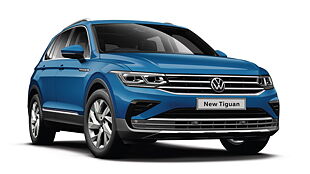Introduction

Everyone is buying an SUV these days. But cars like the Honda City and the Volkswagen Virtus – with their three-box design, low-slung profile, sportier dynamics, and driver’s involvement – have had us petrolheads hinged all these years. And although these two belong to the same segment, have similar pricing, and have more or less the same feature list, there’re still a lot of differences between the two. Hence, we decided to bring these two sedans together for comparing two vital parameters – fuel efficiency and performance. So, if you have been thinking of buying a sedan, either of the two, do read till the end.
Specification

The Honda City needs no introduction. It has been around for close to 25 years in India alone and across many generations. It is available with two engine options right now, petrol and diesel. The diesel is the familiar 1.5-litre, four-cylinder engine making 98bhp and 200Nm and it can be had only with a manual gearbox. There’s also a new City hybrid which was launched in India a couple of months back. Meanwhile, what we are driving here is the 1.5-litre iVTEC petrol engine. This four-cylinder naturally aspirated engine was heavily reworked when this generation of the City arrived two years back. It is available with a six-speed manual – the one we have here – or a CVT automatic, with power figures rated at 119bhp and 145Nm.

Meanwhile, this Virtus is an all-new contender in the C-segment. There’s no diesel engine on offer from this Volkswagen, but it gets two petrol engines. For this test, we have the 1.0-litre three-cylinder turbocharged TSI which makes 114bhp and 178Nm and is paired to a six-speed manual. It can also be had with an automatic – a torque converter, not a DSG. However, if you want a DSG, you’ll have to get the other engine – the 1.5-litre four-cylinder turbocharged TSI EVO which makes a healthy 148bhp and 250Nm.

The ARAI claim for the Virtus 1.0-litre manual is 19.40kmpl. Whereas, for the City, the claimed fuel efficiency is 17.8kmpl. But we won’t be looking at these ARAI-claimed figures here. We, at CarWale, have done rigorous testing for finding out real-world fuel efficiency which is not only consistent but an accurate depiction of how a powertrain would be out in real-world conditions. For this, we tested both the City and the Virtus in the same conditions with the same driver behind the wheel.

Driving Dynamics
Volkswagen Virtus 1.0-litre Manual

When you start up the 1.0-litre TSI of the Virtus, you find it to be quite refined with no vibrations despite it being a three-cylinder engine. We expected a little more grunt lower down the rev range, but this being a turbocharged engine, the meat of the matter is in the mid-range. Its gear slots aren’t the most exciting either and we expected more feel from the gearbox. But the clutch action is light and it is easy to operate. Even the steering has a nice weight to it, and you have good visibility which surely helps in slow-moving traffic. Overall it’s a nice place to be in with the modern cabin.

Now, you can upshift before 2,000rpm but the lack of low-end torque would leave you wanting for more. Yet, once the turbo is all spooled up and ready around 2,500rpm, there’s an instant response from the engine. Moreover, it gets the engine start/stop function which instantly switches off the engine and doesn’t start back quickly until the clutch is engaged, thus saving fuel each time.

This should definitely help the fuel efficiency figures of the Virtus in this test. Then, there’s a good amount of shove from this 1,000cc motor and you can easily hold triple-digit speeds without straining the motor. On the flip side, it is not the best-sounding motor. And that’s majorly because of its three-cylinder configuration.
Honda City 1.5-litre Manual

Get behind the wheel of the Honda City and you’d notice instantly how refined this naturally aspirated four-cylinder is. It is vibration-free and rev-happy. There’s a good amount of low-end grunt as well, so it doesn’t require constant gear shifts when pottering around town. For instance, you are cruising in the city at say 50-60kmph in the sixth gear, you encounter a speed breaker or a junction and you brake to reduce the speed to say 35kmph, yet the engine still wouldn’t stutter. Thus, reducing your need to constantly work the gearbox.

This brings us to the gearbox and clutch – the gearbox is sweet-shifting with perfect throws and the clutch, although slightly spongy, is quite light. Even ergonomically, the City feels much better with your elbow resting perfectly on the armrest and the gear lever right in your palm. The visibility behind the wheel is good and seating is also comfortable so spending long hours behind the wheel shouldn’t be a problem.

Now, as they say, there’s no replacement for displacement, and that stands true for the low-speed drivability of the Honda City. In stop-and-go traffic, it gains momentum effortlessly and speeds up quite cleanly. And as you up the pace, you can even skip a gear, and the engine would settle in without sounding stressed. The Honda City’s cruising ability is commendable on the highways too.
Performance and Fuel Efficiency

From a standstill to around 100kmph, the City petrol manual accelerates faster compared to Virtus. As seen with the acceleration time, it took 4.78 seconds to accelerate to 60kmph from a standstill. Meanwhile, the Virtus bogs down when launched aggressively. There’s a little bit of wheel slippage before the revs drop and then it takes off again. Thus, it’s slower to 60kmph and 100kmph from a standstill, resulting in a 0-60kmph time of 5.35 seconds.

But it’s a different story when it comes to roll-on acceleration. In our 20-80kmph test in third gear, the Virtus is exactly 2 seconds quicker than the City. The difference is larger still as the speed increases, which is evident from our 40-100kmph test in fourth gear. The Virtus is 5 seconds quicker than the City and that’s entirely because of the stronger midrange it has when it’s on boost. However, the City’s 1.5-litre naturally aspirated engine doesn’t have the strong surge in pull in the midrange that you get in the turbocharged Virtus.

At the end of the fuel run, the real-world fuel efficiency of the Volkswagen Virtus petrol manual came to 15.39kmpl in the city and 19.52kmpl on the highway. Equate it and you get an overall fuel efficiency of 16.35kmpl. With a tank capacity of 45 litres, you could practically go more than 730 kilometres in a tankful.

On the other hand, the Honda City returned a fuel efficiency of 14.1kmpl in the city and 18.24kmpl out on the highway. That comes down to overall real-world fuel efficiency of 15.17kmpl. The City has a tank size of 40 litres, so the real-world range should be a little over 600 kilometres.
Conclusion

We admit both these sedans have completely different definitions for their engines. One is a Japanese high-revving, naturally-aspirated four-cylinder. The other is a small, three-cylinder, turbocharged German that’s born out of engine downsizing.

But after driving these cars back to back, we have come to realise that both have their own merits and limitations. The City’s engine is very refined at everyday speeds and offers a linear surge in performance for the most part. The Virtus 1.0-litre, on the other hand, punches hard owing to its turbo power and has the ability to turn everyday commutes into something slightly more exciting.
Pictures by Kapil Angane and Kaustubh Gandhi

![Volkswagen Virtus [2022-2023] Image Volkswagen Virtus [2022-2023] Image](https://imgd.aeplcdn.com/272x153/n/cw/ec/101055/virtus-exterior-right-front-three-quarter.jpeg?isig=0&q=80)

























